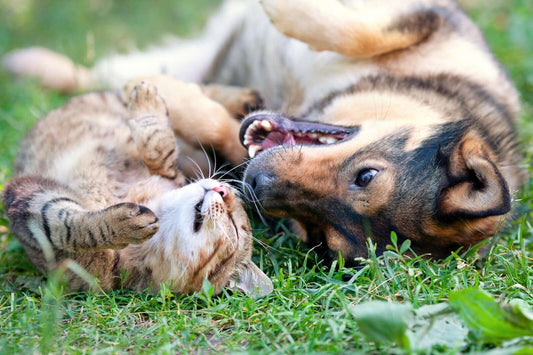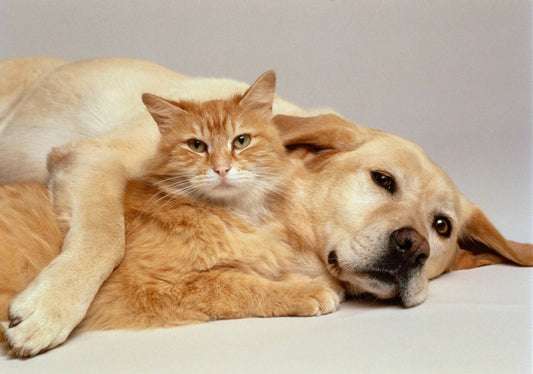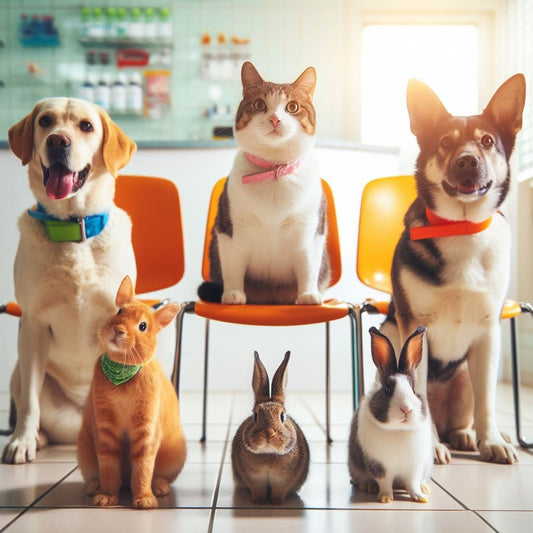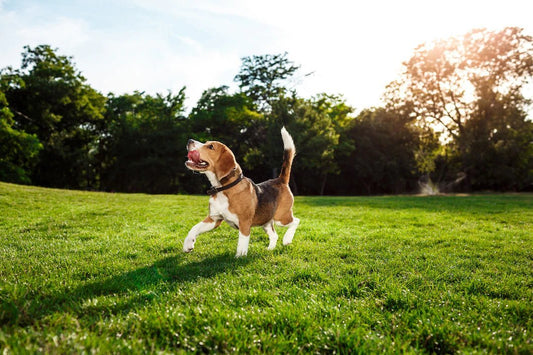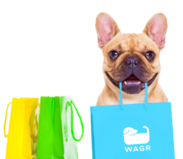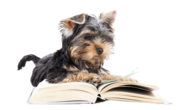Puppies, like human babies, are adorable bundles of energy and curiosity. However, without proper guidance and training, their behaviours can become challenging to manage. By tackling these behaviour problems early on, you not only ensure a happy and well-behaved pup but also lay the foundation for a strong bond and a lifetime of companionship. So, let's roll up our sleeves and discover effective tips to manage those puppy antics together!

House Training:
Proper house training is of utmost importance when bringing a new puppy into your home. House training not only prevents indoor accidents but also establishes a routine, teaches your puppy bladder control, and fosters good habits. Here are a few tips to house train your puppy effectively:
-
Establish a consistent schedule: Take your puppy outside to their designated potty area at regular intervals throughout the day, including after meals and naps.
-
Use positive reinforcement: Reward your puppy with praise, treats, or playtime immediately after they successfully go potty outside.
-
Supervise and limit access: Keep a close eye on your puppy indoors and use baby gates or a crate to restrict their access to areas where accidents can occur.
- Set up a designated potty area: Choose a specific spot in your yard where you want your puppy to go potty, and take them there consistently.

Excessive Chewing & Biting:
It's important to understand that chewing and biting are natural instincts for puppies as they explore the world around them and relieve teething discomfort. Here are some practical tips to redirect this behaviour effectively:
-
Provide appropriate chew toys: Offer a variety of safe and durable chew toys specifically designed for puppies.
-
Puppy-proof your home: Remove any valuable or hazardous items from your puppy's reach, especially your shoes & cables.
-
Use positive reinforcement: When you catch your puppy chewing on their toys or appropriate items, praise and reward them with treats or verbal praise.
-
Redirect and substitute: If you catch your puppy chewing on something they shouldn't, calmly redirect their attention to an appropriate toy.
-
Provide mental and physical stimulation: Puppies often chew out of boredom or excess energy. Engage them in interactive play sessions, provide puzzle toys, and ensure they receive regular exercise to keep them mentally and physically stimulated.
- Avoid harsh punishment: Never resort to physical punishment or yelling when your puppy chews or bites inappropriately. This can create fear and anxiety, which may worsen the behaviour.

Jumping On People:
Puppies have a natural tendency to jump on people as a way to seek attention, show excitement, or establish dominance. Here are some training methods and techniques to discourage jumping on people:
-
Ignore and redirect: When your puppy jumps on you or others, avoid giving them attention or reacting to their behavior. Turn away, cross your arms, and remain still. Once your puppy has calmed down and all four paws are on the ground, redirect their attention to an appropriate behavior, such as sitting or offering a toy.
-
Teach "off" or "down" command: Use positive reinforcement to teach your puppy the "off" or "down" command. Start by holding a treat in your closed fist and say the command. When your puppy stops jumping and sits or backs away, reward them with the treat and praise. Repeat this exercise consistently to reinforce the desired behaviour.
-
Consistent training and reinforcement: Train your puppy consistently and ensure that everyone in the household follows the same rules. Reinforce positive behavior by praising and rewarding your puppy when they greet people calmly without jumping. This helps them understand what is expected of them.
-
Use leash and tether training: When greeting guests or encountering new people, keep your puppy on a leash or tether. This allows you to have control and prevent them from jumping. Gradually, with positive reinforcement and consistent training, your puppy will learn to greet people calmly without jumping.
- Provide alternative greetings: Teach your puppy an alternative behaviour, such as sitting or offering a paw, to greet people instead of jumping. Encourage visitors to only give attention or pet your puppy when they are exhibiting the desired behaviour.

Excessive Barking:
Excessive barking in puppies can be a common concern for many pet owners. Here's what you can do to control their barking:
-
Identify the triggers: Puppies may bark excessively due to various reasons, including fear, boredom, attention-seeking, or territorial instincts. Observe your puppy's behavior and try to identify the specific triggers that lead to excessive barking.
-
Desensitization and counter-conditioning: If your puppy tends to bark at specific triggers like loud noises or strangers, gradually expose them to these triggers in a controlled manner.
- Seek professional help if needed: If your puppy's excessive barking persists despite your efforts, consider consulting a professional dog trainer or behaviorist. They can provide guidance tailored to your specific situation and help address any underlying issues contributing to the barking behaviour.

Leash Training:
Leash training allows you to have control over your puppy during walks, ensuring their safety and preventing any potential accidents or escapes. It also helps establish boundaries, reinforces obedience, and promotes good behaviour in public spaces. Here are some tips on leash training.
-
Introduce the leash gradually: Start by letting your puppy explore and get comfortable with the leash and collar in a familiar environment.
-
Practice indoors: Begin training indoors or in a secure, low-distraction area. Attach the leash and let your puppy walk beside you while offering treats and encouragement. Keep the leash loose and allow them to explore within a limited radius.
-
Teach basic commands: Teach your puppy basic commands like "sit," "stay," and "heel." Use these commands during leash training to establish control and reinforce good behaviour.
-
Gradual exposure to outdoor environments: Once your puppy is comfortable indoors, gradually introduce them to different outdoor environments.
- Positive reinforcement: Reward your puppy for walking nicely on the leash, following commands, and exhibiting good behaviour.

Separation Anxiety:
Separation anxiety occurs when puppies become anxious or stressed when separated from their owners. This can manifest in behaviours like excessive barking, destructive chewing, and house soiling. It's important to recognize that puppies are social animals and may feel anxious when left alone for extended periods.
-
Gradual desensitization: Gradually expose your puppy to periods of separation. Start with short intervals and gradually increase the time as they become more comfortable.
-
Establish a routine: Create a consistent daily routine that includes alone time for your puppy. This helps them develop a sense of predictability and reduces anxiety.
-
Counter-conditioning: Associate your departure cues (e.g., grabbing keys, putting on shoes) with positive experiences. Practice these cues without actually leaving, gradually desensitizing your puppy to the triggers that typically cause anxiety.
-
Create a safe space: Provide a designated area, like a crate or a specific room, where your puppy feels secure and comfortable. Make this space inviting with bedding, toys, and familiar scents.
- Seek companionship: If possible, consider enlisting the help of a dog sitter, family member, or neighbor to provide companionship and break up long periods of solitude for your puppy.

Socialization:
Early socialization exposes puppies to a variety of people, animals, environments, and experiences to help them develop appropriate social skills, reduces the likelihood of fear or aggression, and fosters a positive outlook towards the world around them.
-
Start early: Begin socializing your puppy as soon as possible, ideally between 3 to 14 weeks of age when they are more receptive to new experiences.
-
Positive exposure: Introduce your puppy to different sights, sounds, smells, and textures in a positive and controlled manner. Gradually expose them to busy streets, markets, parks, and various household sounds.
-
Encourage positive interactions: Arrange playdates with other vaccinated and friendly dogs, ensuring that the interactions are supervised and safe.
-
Gentle exposure to stimuli: Gradually expose your puppy to potentially stressful stimuli, such as car rides, grooming sessions, and vet visits.
- Enroll in puppy classes: Consider enrolling your puppy in puppy socialization classes or training programs conducted by professional trainers.

Remember that your puppy is learning and growing, and it's important to approach training with understanding and empathy. By using positive reinforcement techniques, such as rewards and praise, you can encourage desired behaviours and gradually correct any problem behaviours. Consistency in your training methods and routines will provide clear expectations for your puppy, helping them understand what is expected of them. Above all, remember that patience is key. Rome wasn't built in a day, and neither is a well-behaved puppy! With time, effort, and a lot of love, you can guide your puppy towards becoming a happy and well-adjusted member of your family.


